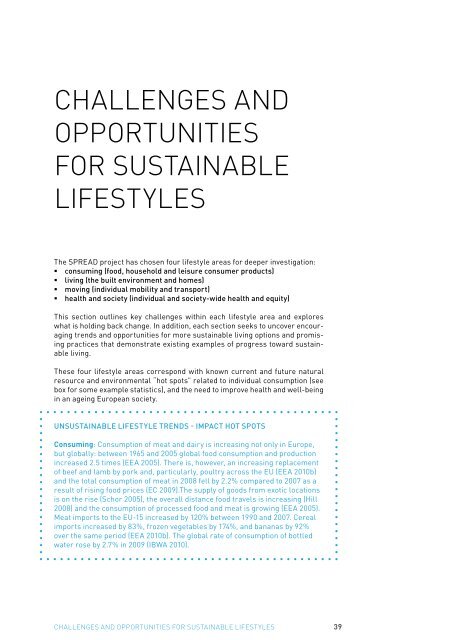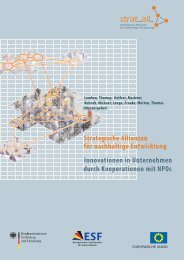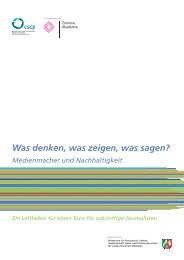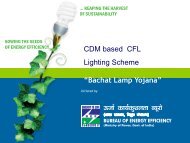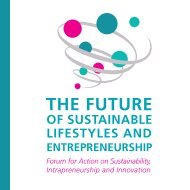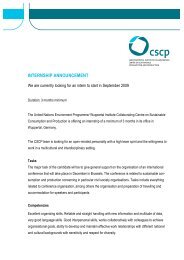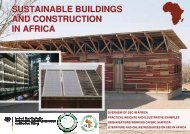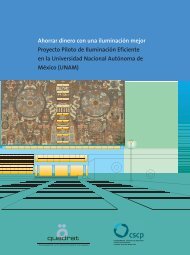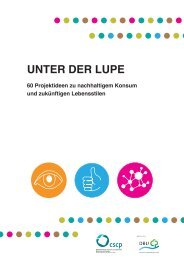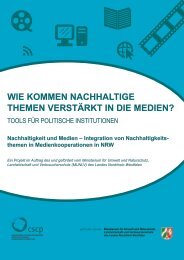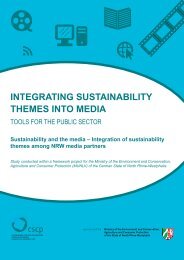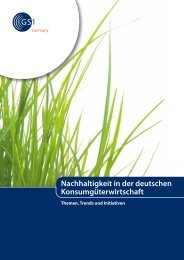today's facts & tomorrow's trends - SPREAD Sustainable Lifestyles ...
today's facts & tomorrow's trends - SPREAD Sustainable Lifestyles ...
today's facts & tomorrow's trends - SPREAD Sustainable Lifestyles ...
You also want an ePaper? Increase the reach of your titles
YUMPU automatically turns print PDFs into web optimized ePapers that Google loves.
Challenges and<br />
opportunities<br />
for sustainable<br />
lifestyles<br />
The <strong>SPREAD</strong> project has chosen four lifestyle areas for deeper investigation:<br />
• consuming (food, household and leisure consumer products)<br />
• living (the built environment and homes)<br />
• moving (individual mobility and transport)<br />
• health and society (individual and society-wide health and equity)<br />
This section outlines key challenges within each lifestyle area and explores<br />
what is holding back change. In addition, each section seeks to uncover encouraging<br />
<strong>trends</strong> and opportunities for more sustainable living options and promising<br />
practices that demonstrate existing examples of progress toward sustainable<br />
living.<br />
These four lifestyle areas correspond with known current and future natural<br />
resource and environmental “hot spots” related to individual consumption (see<br />
box for some example statistics), and the need to improve health and well-being<br />
in an ageing European society.<br />
Unsustainable lifestyle <strong>trends</strong> - impact hot spots<br />
Consuming: Consumption of meat and dairy is increasing not only in Europe,<br />
but globally: between 1965 and 2005 global food consumption and production<br />
increased 2.5 times (EEA 2005). There is, however, an increasing replacement<br />
of beef and lamb by pork and, particularly, poultry across the EU (EEA 2010b)<br />
and the total consumption of meat in 2008 fell by 2.2% compared to 2007 as a<br />
result of rising food prices (EC 2009).The supply of goods from exotic locations<br />
is on the rise (Schor 2005), the overall distance food travels is increasing (Hill<br />
2008) and the consumption of processed food and meat is growing (EEA 2005).<br />
Meat imports to the EU‐15 increased by 120% between 1990 and 2007. Cereal<br />
imports increased by 83%, frozen vegetables by 174%, and bananas by 92%<br />
over the same period (EEA 2010b). The global rate of consumption of bottled<br />
water rose by 2.7% in 2009 (IBWA 2010).<br />
Challenges and opportunities for sustainable lifestyles 39


